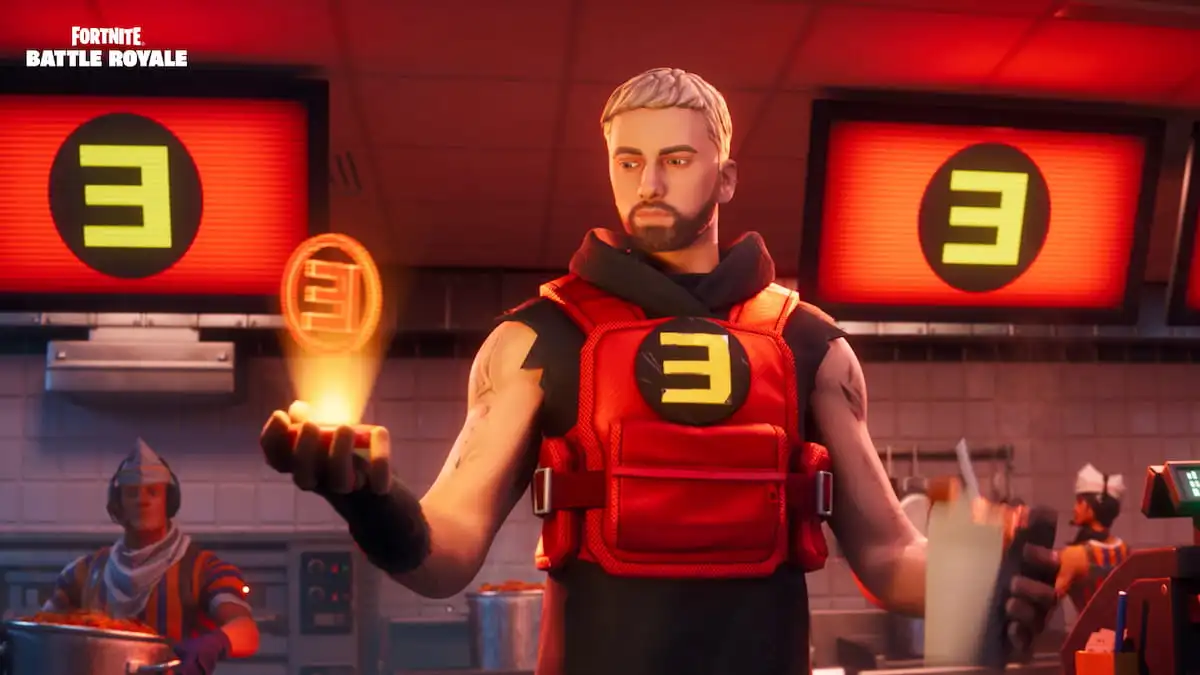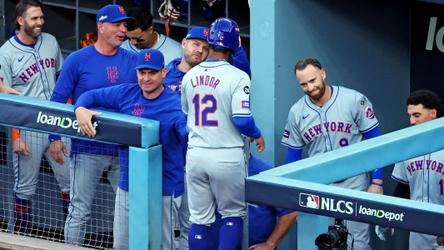This wild ride was always going to sting when it ended, because these Mets played for weeks and months with the type of heart and toughness that allowed their fans to dream anything was possible, even a championship.
Yet the way it ended surely softened the blow a bit anyway. The superior team won and there wasn’t a bit of doubt about it.
Naturally, however, for a team defined by its fight in so many ways, the Mets were still pushing right to the end, scoring a run in the ninth inning and threatening for more before finally succumbing in a 10-5 loss to the Dodgers on Sunday night in Game 6 of the NLCS in Los Angeles.
Yet when all was said and done, the series wasn’t very close at all.
In the Mets’ four losses they were outscored 37-7, and in the two games they won they benefited from LA manager Dave Roberts choosing to hold out his high-leverage relievers, saving them for strategic purposes.
Not that the Mets couldn’t compete with the Dodgers. They just didn’t have the fresh arms to hold down such an offensive juggernaut, mostly because their bullpen was on fumes for much of the postseason and all the innings appeared to finally catch up with Sean Manaea and Luis Severino.
In truth, it was practically inevitable.
The Mets had been playing high-intensity, playoff-like baseball for several weeks as they battled in September for a wild card spot and then spent untold amounts of energy and emotion in pulling off all those miracle comeback wins from Atlanta to Milwaukee to Philadelphia that got them to the NLCS.
They were going to have to outslug LA to have any real hope of winning the series, and that was always going to be a gigantic task, not only because they were streaky offensively all season but because the Shohei Ohtani-led Dodgers almost certainly have the deepest, most imposing lineup in the majors.
They averaged nine runs a game in their four wins, and that was with Freddie Freeman compromised by a bad ankle. Indeed, the series showcased not only Ohtani and Mookie Betts, but Max Muncy as an on-base machine and, in Game 6, Tommy Edman delivering the big blows as an unlikely clean-up hitter.
In fact, the telltale sign that Manaea didn’t have it on Sunday night was Edman taking him deep in the third inning on a fastball at the top of the strike zone, where the Mets’ left-hander had been unhittable with his late-life fastball since adopting that Chris Sale-like sidearm delivery back in June.
From the start it was obvious Manaea didn’t have that late life on this night, and so you knew early on, as they fell behind 4-1, the Mets had very little chance of winning because they desperately needed their ace to go deep into the game and take the load off the withering bullpen.
So while it was something of a slow death, in a baseball sense, there was no heartbreak, no wondering how it might have been different with a big hit here or a big strikeout there.
The Mets had their chances, to be sure. After six innings they had already left 11 runners on base and gone 1-for-8 with runners in scoring position.
And by then Carlos Mendoza had tried desperately to keep the game within striking distance, bringing in Edwin Diaz in the fourth inning, and he did just when his closer pitched two scoreless innings with the score at 6-3.
So it’s not like the Mets had no shot of winning on Sunday night. But the longer it went, the harder the task became, as Roberts deployed his very strong group of late-inning relievers to get the final 12 outs of the game, and the LA lineup kept adding on runs against the rest of the bullpen and, finally, even Kodai Senga.
It all added up to more of a night of reflection than what might have been. A night to appreciate the remarkable ride these Mets gave their fans and New York City, from the turnaround of their season way back in June to the moments of delirium in September and October.
They proved to be a much better team than anyone expected, considering that even Steve Cohen was calling it a “transition” year when the season began, when everyone thought he was saving up for 2025 and beyond.
Mostly then:
It was a season that will be remembered for Mets’ fans falling in love with Francisco Lindor, making the sing-a-longs to his “My Girl” walk-up song a late-season phenomenon at Citi Field that in many ways epitomized the joy the Queens faithful experienced with all the unexpected success.
It was a season that launched what appears to be a star player, maybe even a superstar, in Mark Vientos, who validated his surprising regular season by performing like some sort of baby Mr. October, carrying the offense in the postseason at times.
It was a season in which we found out the Mets hired the right manager in Carlos Mendoza, who demonstrated a feel for the game, for his players, and for handling himself with the media in ways that stamp him as a someone who should be in the dugout at Citi Field for years to come.
All in all, it was a season that is likely to be remembered fondly not only for all the heroics along the way, but as a first step toward sustained success, as Cohen and David Stearns seem to have the franchise headed for a bright future, with more young players coming from an improving farm system and the promise of a financial commitment to spend whatever it takes.
What that means for Pete Alonso, not to mention one Juan Soto, remains to be seen in what will surely be an intriguing offseason, but it’s hard to believe any Met fan doesn’t feel good about the direction of the organization.
As Mendoza said after Game 6, summing up the season:
“We raised the bar. The expectations. This is what we should be striving for every year, to be playing deep into October. We understand we’ve got a lot of work to do. But we took a big step in that direction this year.”
In the end, they were reminded they are not yet the Dodgers, the organization that Cohen, upon becoming the owner four years ago, proclaimed he wanted to emulate.
But after this season there is suddenly more reason to believe the Mets will get there. And sooner than later.
Read the full article here

























